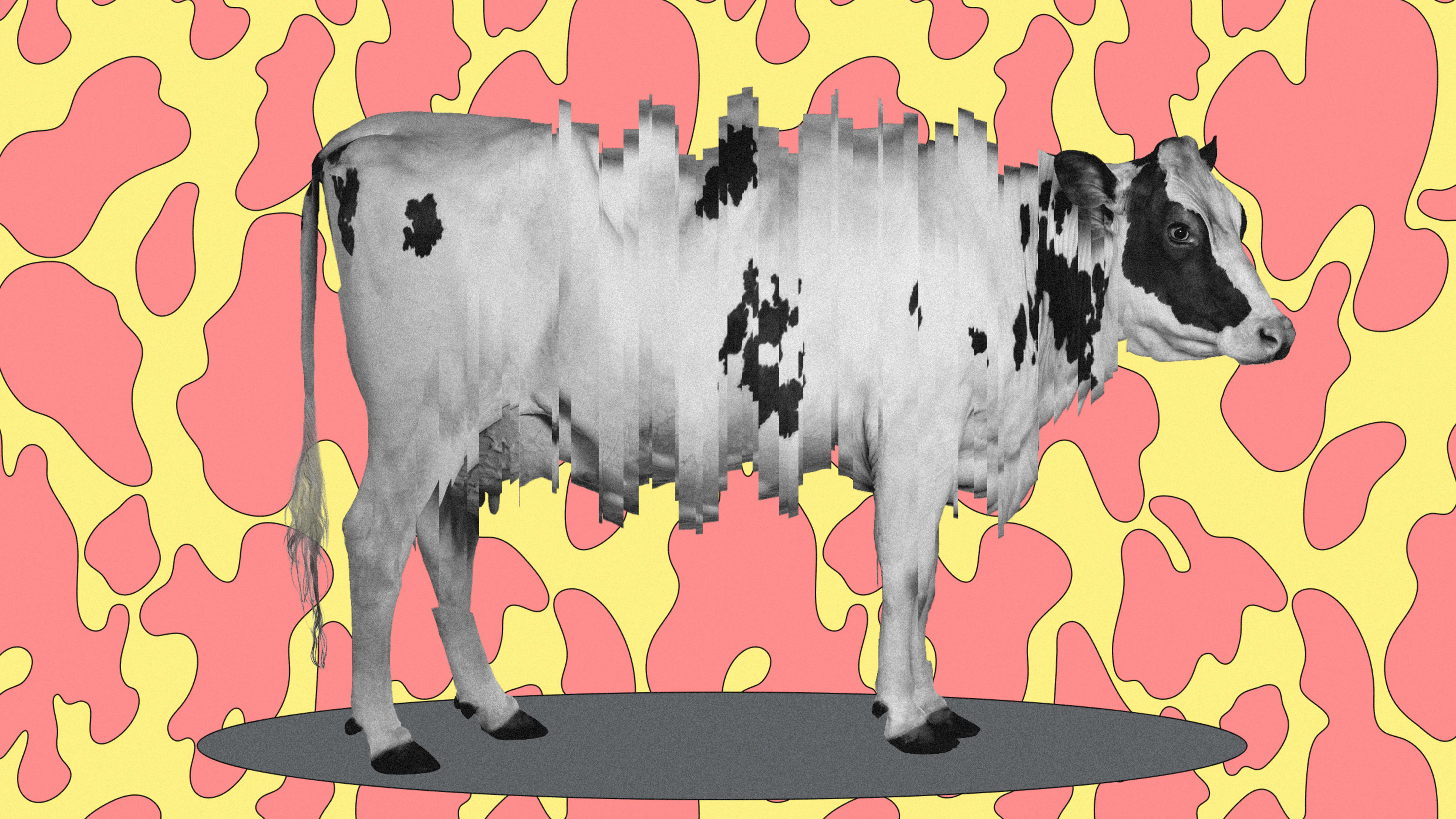An unstoppable trifecta of fast-improving technology, new business models, and fast-falling costs is creating the deepest, most consequential disruption of food and agriculture in ten thousand years. We face the end of the cattle industry as we know it, and the exponential market growth of inexpensive, high-quality, tasty modern food designed using food-as-software technology based on precise consumer specifications.
If the U.S. embraces these cheaper and more nutritional modern foods, it can seize a fat slice of an industry that is poised to create 1 million jobs and grow to $1 trillion annually by 2035. If it resists, it risks locking in expensive and obsolete assets, technologies, and skill sets while other countries capture the jobs and wealth that come with building a world-leading industry.
The key to understanding the speed and scale of this disruption is recognizing what happens when the most essential contents of a product are replaced quickly and cheaply. A bottle of milk contains only 3.3% protein. Replace that and there goes the need for a dairy cow. Those proteins—casein and whey—are already being produced in Silicon Valley. We expect these proteins to reach cost parity with animal proteins around 2023 to 2025.
This is not just one disruption: It’s death by a thousand cuts. In our new report, “Rethinking Food and Agriculture 2020-2030,” we analyze the way many different products derived from the cow—from burgers and milk to leather and collagen—will be completely disrupted separately and concurrently by new technologies and business models, which overlap, reinforce, and accelerate each other.
By 2030, we estimate the number of cows in the U.S. will have fallen by 50% and the beef and dairy industries will have collapsed as animal-derived foods are replaced by modern equivalents that are superior and cost less than half as much to produce. All other livestock industries will suffer a similar fate, while businesses throughout the supply chain, from processing plants and renderers to crop farmers and tractor manufacturers, will be hit hard.
This is a protein disruption driven by economics. We can now program microorganisms to produce almost any protein we want because of huge advances in precision biology (the convergence of biology and information technologies) and a process we call precision fermentation (PF). Today, 90% of American-made cheese uses PF proteins. (This is not genetic modification of foods. Proteins have no genetic material so they can’t be genetically modified.) The cost of PF is falling exponentially, from $1 million per kilogram in 2000 to about $100 today. Assuming existing technologies, we project these costs will fall to $10 per kilogram by 2023 to 25. PF proteins will be five times cheaper than animal proteins by 2030 and 10 times cheaper by 2035.

Mainstream analysts fail to foresee the speed, scale, and impact of disruption because their models do not account for the complex, systemic, and dynamic way disruptions unfold. This is not a simple, one-for-one substitution of Impossible Burger for cow burgers. As protein after protein derived from animals is replaced by less-expensive, higher-quality PF alternatives, it becomes more expensive to produce those animal products in the face of decreasing demand, triggering a death spiral of increasing prices and reversing economies of scale.
While this disruption is inevitable, decision-makers can affect how fast it happens, how widely it spreads, and who benefits. Will this be a market designed to promote openness, transparency, and competition? Or will it be more like the pharmaceutical industry, dominated by a few monopolies with the power to pervert the benefits? Countries that choose the former model will outcompete those that choose the latter.
The benefits of modern foods are profound. The average U.S. family will save more than $1,200 a year, keeping an additional $100 billion a year in Americans’ pockets by 2030. Far healthier than industrial animal meat, modern foods will help to reduce heart disease, obesity, cancer, and diabetes, which are estimated to cost Americans $1.7 trillion annually. Removing animals from food production will reduce U.S. greenhouse gas emissions by 65% by 2035. It will also free up a landmass as large as the Louisiana Purchase.
The business opportunities are enormous. Everyone needs to eat. Modern food offers the promise of high-quality, nutritious, inexpensive food—and the opportunity to build a multi-trillion-dollar industry that will soon feed the world. This disruption has already started. The time to lead is now.
Tony Seba, an award-winning, best-selling author and Silicon Valley entrepreneur and angel investor, is cofounder of RethinkX, an independent think tank that analyzes and forecasts the scope, speed, and scale of technology-driven disruption and its implications across society.
Catherine Tubb is an expert on the agriculture, pesticide, and fertilizer industries. She coauthored with Seba “Rethinking Food and Agriculture 2020-2030—The Second Domestication of Plants and Animals, the Disruption of the Cow, and the Collapse of Industrial Livestock Farming,” the second in a series of RethinkX reports on technology disruption and its implications for society.
Recognize your brand’s excellence by applying to this year’s Brands That Matter Awards before the early-rate deadline, May 3.
